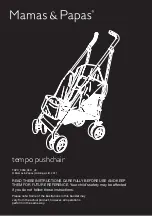
Safety Instructions
S-27
7.2 Robot protective functions
Protective functions for YAMAHA robots are described below.
Overload detection
1.
This function detects an overload applied to the motor and turns off the servo.
If an overload error occurs, take the following measures to avoid such errors:
1. Insert a timer in the program.
2. Reduce the acceleration.
Overheat detection
2.
This function detects an abnormal temperature rise in the driver inside the controller and turns off the servo.
If an overheat error occurs, take the following measures to avoid the error:
1. Insert a timer in the program.
2. Reduce the acceleration.
Soft limits
3.
Soft limits can be set on each axis to limit the working envelope in manual (jog) operation and automatic operation after
return-to-origin. The working envelope is the area limited by soft limits.
w
WARNING
Soft limit function is not a safety-related function intended to protect the human body.
To restrict the robot movement range to protect the human body, use the mechanical stoppers installed in the
robot (or available as options).
Mechanical stoppers
4.
If the servo is turned off by emergency stop operation or protective function while the robot is moving, then these
mechanical stoppers prevent the axis from exceeding the movement range. The movement range is the area limited by
the mechanical stoppers.
SCARA robots
• The X and Y axes have mechanical stoppers that are installed at both ends of the maximum movement
range. Some robot models have a standard feature that allows changing the mechanical stopper
positions. On some other models, the mechanical stopper positions can also be changed by using
option parts.
• The Z-axis has a mechanical stopper at the upper end and lower end. The stopper positions can be
changed by using option parts.
• No mechanical stopper is provided on the R-axis.
YK-TW series robots do not have mechanical stoppers intended to protect the human body, due to the
product characteristic of the orbit movement. When it is necessary to restrict the arm rotation angle so as
to ensure the safety, install additional stopper separately.
Single-axis robots
Cartesian robots
• The linear movement axis has a mechanical stopper at both ends of the maximum movement range.
The positions of these mechanical stoppers cannot be changed.
• No mechanical stopper is provided on the rotational axis.
w
WARNING
Axis movement does not stop immediately after the servo is turned off by emergency stop or other protective
functions, so use caution.
c
CAUTION
If the robot moving at high speed collides with a mechanical stopper installed in the robot (or available as
option), the robot may be damaged.
w
DANGER
When the linear conveyor module is used to insert or eject the slider, mechanical stoppers cannot be attached
to the module body due to the structural limits. So install a device to catch and stop the slider being ejected at
high speed from the module, as well as other necessary safety measures.
Z-axis (vertical axis) brake
5.
An electromagnetic brake is installed on the Z-axis to prevent the Z-axis from sliding downward when the servo is OFF.
This brake is working when the controller is OFF or the Z-axis servo power is OFF even when the controller is ON. The
Z-axis brake can be released by the programming unit / handy terminal or by a command in the program when the
controller is ON.
w
WARNING
The vertical axis will slide downward when the brake is released, causing a hazardous situation. Take adequate
safety measures in consideration by taking the weight and shape into account.
• Before releasing the brake after pressing the emergency stop button, place a support under the vertical axis so
that it will not slide down.
• Be careful not to let your body get caught between the vertical axis and the installation base when performing
tasks (direct teaching, etc.) with the brake released.
Summary of Contents for RCX222
Page 1: ...RCX222 EUR2153130 E99 Ver 1 30 Userʼs Manual YAMAHA 2 AXIS ROBOT CONTROLLER ...
Page 2: ......
Page 14: ......
Page 43: ......
Page 46: ......
Page 50: ...4 MEMO ...
Page 51: ...Chapter 1 USING THE ROBOT SAFELY Contents 1 Operating environment 1 1 ...
Page 52: ......
Page 56: ......
Page 98: ......
Page 388: ......
Page 412: ...5 24 MEMO ...
Page 414: ......
Page 430: ......
Page 442: ......
Page 450: ...8 8 MEMO ...
Page 452: ......
Page 523: ......
















































